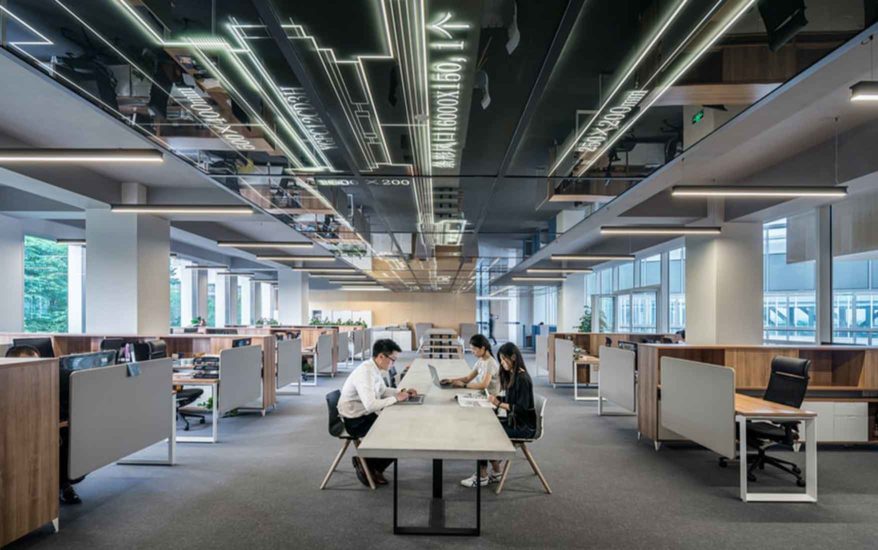
Many modern businesses welcome open spaces in the workplace. However, even though open spaces do foster collaboration, there can also be inconveniences. Workspaces should be optimised for maximum utilisation while also maintaining the space and privacy necessary for employee wellbeing.
Around 73% of UK employees are working in a shared office (two or more people in the same room), according to a CSA institute study, and many new business headquarters are being conceived this way today.
Open spaces, on the other hand, are defined as having more than four people in one office. The UK has the highest incidence of this, with 32% in total. Spain is next, with 27%, the Netherlands has 25%, Sweden 22%, France 17% and Germany 11%.
While interactions are more natural, and communication more fluent within open office spaces, drawbacks are indeed present, too. It is important that office spaces are designed not only to maximize productivity, but also to ensure the health and wellbeing of your employees.
A Breeding Ground for Bacteria?
According to a Danish study, employees who work in open spaces are twice as likely to be off sick than those who work in individual offices. The blame for this could be placed on air conditioning systems, as they can often accelerate the passage of respiratory viruses between colleagues. Another contributing factor is the sharing of phones, keyboards or mouse devices – all these items are made in hard and non-porous materials, and studies show that the flu virus can stay alive for two days on this type of surface.
Privacy and Noise
52% of employees working in open workspaces name noise as a major disadvantage. While singular noises do not reach decibels that pose a hazard to hearing, the accumulation of noises like multiple phone conversations, ringtones and conversations at crossing points can cause focus issues for many.
Benefits of the Open Space
Despite these potential difficulties, the open space office can offer numerous advantages to businesses, such as:
- Gains in space, and therefore money: Most companies do not know the full potential utilisation of their office space, and it is estimated that utilisation of open workspaces save between 10% and 40% of the total work area. Thus, companies adopting this layout can make better use of a smaller space, and will potentially save on rent and business costs.
- Better responsiveness: Working in open space enables businesses to adapt more quickly to changes in staffing requirements. Some sectors will experience peaks of activity that require temporary contracts – the open space arrangement makes it possible to be more flexible and responsive by quickly creating new workspace.
- Improved communication: Open space allows employees to interact with each other more often, and makes the workspace more agile. This affects the company in two ways; there is a greater user-friendliness, which improves the working conditions and therefore the employees’ productivity. Additionally, this will facilitate and encourage employees to share ideas about specific issues helping to foster collaboration.
- A modification of hierarchical relationships: The action of open space work on hierarchical relationships is complex. Open spaces can help to erase certain distances, and thus encourages employees to solicit their manager with more ease. It also allows the latter to better evaluate the work of their colleagues.
Privacy and noise issues can be detrimental to the productivity of some workers, which is why it is important to implement technology to help all of your employees perform at their best. Workplace occupancy sensors can help workers plan their workspace according to their needs, and implementing an effective desk-to-user ratio can help give employees space when they need it.
Open spaces therefore have pros and cons, but the outcome is all down to the management of these spaces and their configuration. Condeco has helped many companies analyse office space usage to better understand how employees are using it; what the most suitable work environment is for their activities, and how to best optimize it for both comfort and efficiency.



